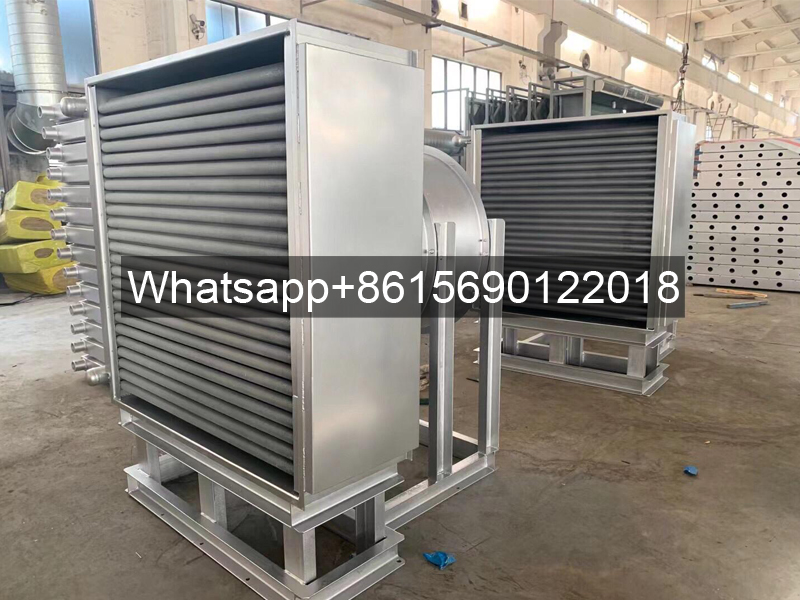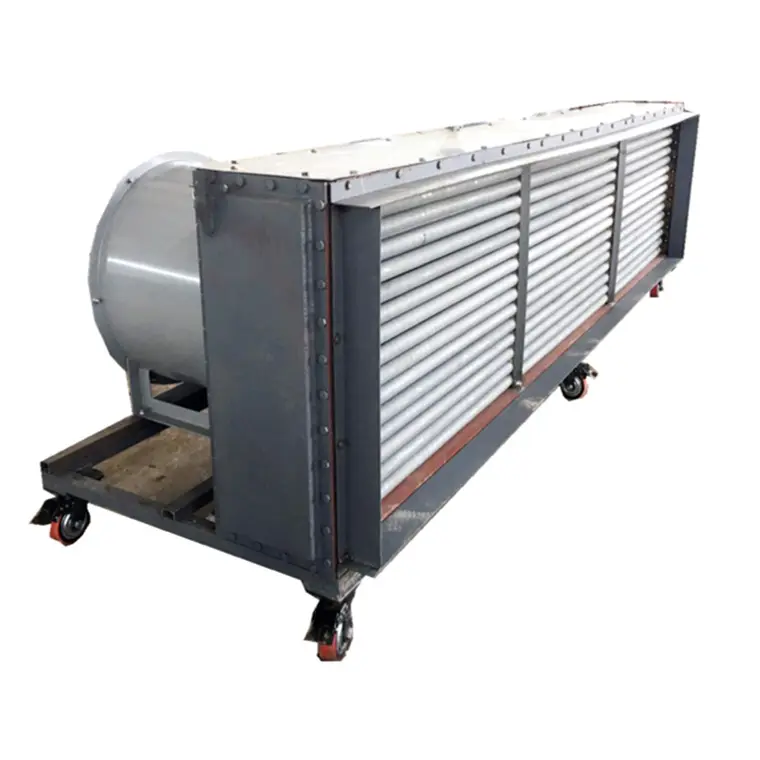Energy Saving Air Cooled Heat Exchanger With Fans
Energy Saving Air Cooled Heat Exchanger With Fans is mainly composed of tube bundles, brackets and fans, and adopts a wall-type heat exchange method. The hot fluid flows in the tube and exchanges heat with the ambient air outside the tube through the aluminum fin tube to achieve cooling or condensation. Fans are usually used to enhance air flow and improve heat exchange efficiency.

Air Cooled Heat Exchanger with Fan is a device that uses a fan to force air flow to improve heat exchange efficiency. It is mainly composed of tube bundles, brackets and fans, and adopts the principle of inter-wall heat exchange.
Air Cooled Heat Exchanger With Fans Structure Composition
Air Cooled Heat Exchangerwith Fan usually includes the following core components:
Tube bundle: high-temperature process fluid (such as oil and gas, circulating gas, etc.) flows inside, and the outside is heat exchanged with air through fins;
Bracket: supports the tube bundle and fixes the fan;
Fan: increases air flow rate through forced ventilation and enhances heat exchange efficiency (common types include axial flow fans, low noise types, etc.).

Working Principle of Air Cooled Heat Exchanger With Fans
High-temperature process fluid flows in the tube, and the fan drives the air to sweep across the outer surface of the finned tube, achieving cooling through heat conduction and convection. Aluminum fins can expand the heat transfer area and optimize the heat exchange efficiency.
Application Scenarios of Air Cooled Heat Exchanger
Chemical/Petroleum: Cooling reaction products or oil and gas condensation;
Electricity: Used for boiler heat dissipation or generator cooling;
Metallurgy/Pharmaceutical: Heat exchange link in the process flow.
Key Features of Air Cooled Heat Exchanger
High-pressure tolerance: Working pressure can reach 69 MPa;
Water-saving and environmental protection: Replace water cooling system to reduce water resource consumption and pollution;
Economical: Maintenance cost is lower than water cooling system, especially suitable for water-scarce areas.
